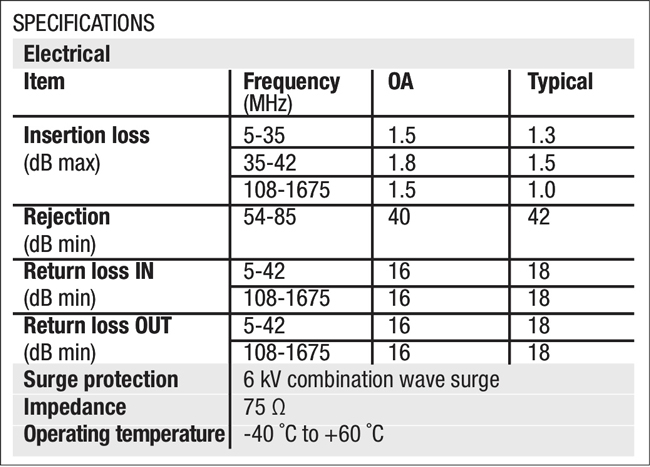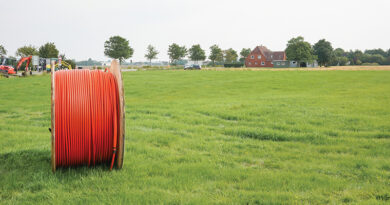Preparing for Upstream Upgrades with Legacy CPE
By Dave Wachob
As cable operators prepare for bandwidth expansions on their networks, in particular upstream upgrades to mid- or high-splits due to the recent increases in customers working and schooling from home, there is a potential problem on the horizon. For the vast majority of the last 30 years, customer premise equipment (CPE), including set-tops, modems and residential amplifiers, have been operating with an upstream return band from 5 MHz to 42 MHz. This band served the initial needs of the cable industry adequately, as the upstream data was generally limited to PPV purchases, VoIP, interactive TV and historically asymmetrical DOCSIS modem traffic. As such, cable networks and CPE worked well together to provide reliable upstream and downstream communications.
Changing consumer and business needs have greatly increased the need for additional upstream capacity, especially due to recent outbreaks of COVID-19. With the introduction and enhanced capabilities of DOCSIS 3.1, remotely configuring the modems to operate in the mid- (5 MHz to 85 MHz) or high-split (5 MHz to 204 MHz) return bands is relatively straightforward. The challenges lie in both correctly aligning the cable network to support the additional upstream capacity, and ensuring that existing legacy CPE can function with that additional upstream capacity. I will discuss the challenges of the latter, as the former was well covered in Ron Hranac’s Feb 19, 2020 Broadband Library article on “Understanding Band Splits In Two Way Networks.”
Because many of the legacy (especially early) set-tops and residential amplifiers were designed to transmit only within the 5 MHz to 42 MHz band, they were expecting to receive downstream channels starting at 54 Mhz. As such, these devices were designed with sensitive receiver circuitry that could detect input signal levels as low as 0 dBmv (or potentially even lower). The problem occurs when these legacy CPE units are now subjected to signals transmitted above 54 MHz by DOCSIS modems configured for either mid- or high-split returns.
The situation is highlighted in Figure 1, which shows a typical house splitter with downstream receive levels (in red) and upstream DOCSIS transmit levels (in green). With the modem transmitting into the splitter’s left leg in the mid- or high-split band at +45 dBmV (or higher), even with a typical port-to-port isolation of 28 dB, +17 dBmV of that modem’s transmit signal will be present on the splitter’s right leg. If the right side of the splitter is in turn connected to legacy CPE described above, signal overload of the CPE could occur, resulting in performance degradation on some or all of the CPE’s receive channels.
There are two primary ways to alleviate the above problem. The first is to replace all potentially suspect CPE with more modern CPE able to accommodate the higher input levels, which would be both costly and logistically challenging. The other alternative is to place a bandreject filter in front of the suspect CPE, to prevent signal overloading. Figure 2 highlights the typical specifications of such a filter.
—

Figure 1.

Figure 2. Typical specifications of an inline filter designed to be installed on the input of legacy in-home devices that use 42/54 MHz. The filter prevents overload/inference to set-top boxes, modems, and other devices upon the activation of 85/104 MHz (mid-split) devices within the same premise.
—

Dave Wachob,
Director, Business Development,
Antronix
Dave Wachob has been Antronix’s director of business development for six years. He has more than 40 years in business development, in system design of wired and wireless communications networks, and in product conception. In his more than 25 years in cable and television, he has developed Wi-Fi and cellular systems and products, as well as interactive TV, VoD, EPG, fiber optics, ultra wide band, and DOCSIS systems. Dave holds 24 patents, has published numerous industry papers, and has given technical presentations around the world. He has bachelor’s and master’s degrees in electrical engineering, as well as an MBA in international business.


